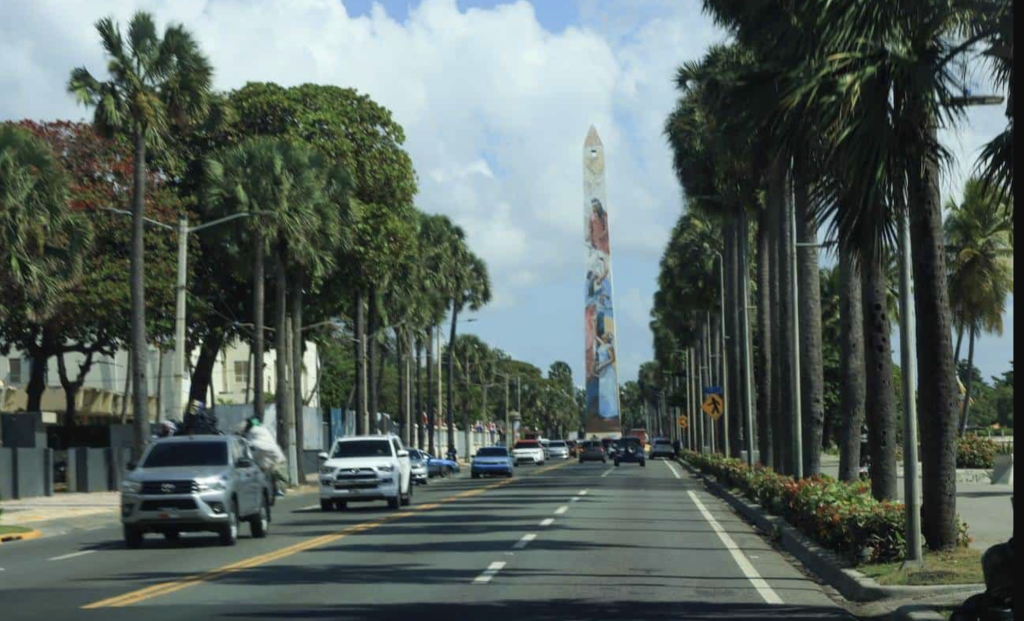
Lawyer Marisol Vicens Bello writes in Noticias SIN about the lack of vision and the delays in the authorities giving real worth to the city’s Caribbean Sea-facing promenade, the Malecon (Av. George Washington). She urges that the government enforce the removal of heavy vehicle traffic from the Malecon so it can reach its potential as a complement to the Colonial City attractions. So far, the authorities continue to issue exceptions to the ban on heavy traffic, adding to congestion and impacting safety of the boulevard.
She writes:
“It should be a source of shame that, despite having the privilege of our capital, Santo Domingo, being located right in front of the beautiful Caribbean Sea, we live with our backs turned to it, content with glimpsing it from afar, from tall and expensive towers in some cases. The lack of awareness and the failure to comply with regulations continue to prevent our beautiful Malecón from being a peaceful and pleasant place for the enjoyment of the people of the capital and those visiting us from abroad or other parts of the country.
“It is paradoxical that the deterioration of our Malecón has taken place precisely as tourism was developing in our country, eventually becoming the most important sector of our economy. Investors, restaurateurs, and hoteliers have preferred to migrate to the crowded and disordered new center of the city, perhaps tired of waiting for solutions.
“Our Colonial City had to wait patiently for the renovation of some of its most important monuments, like the Santa María de la Encarnación Cathedral (the First Cathedral of the Americas) as part of the celebration of the Fifth Centenary of the Discovery of America in 1992 and its declaration by Unesco as a World Heritage site. Gradually, partly due to the interest of foreigners in its ancient houses, acquisitions and renovations began to take place, raising its cost and generating investments in hotels and restaurants. More recently, this has been consolidated with the Integrated Tourism and Urban Development Program of the Colonial City, financed by the IDB, which is now in its second phase. This has led to a significant investment to enhance our cultural offering, with the recently inaugurated Cathedral Museum and the Las Atarazanas Reales Museum, complemented by the private sector, which also wanted to leave its mark with the Taíno Cultural Center Casa del Cordón.
“For our Colonial City to truly be an attractive and valuable offering for tourism development, this renovation must be linked to the Malecón. For this reason, developers and investors have long presented projects to transform this beautiful coastline, creating marinas and converting the old Port of Santo Domingo into a recreational area similar to the famous Puerto Madero in Buenos Aires. However, in order for these ambitious plans to become a reality, an essential first step needs to be taken, one that, although seemingly simple, has been impossible to achieve: removing heavy vehicles from the Malecón.
“The various ordinances issued by the District Council of the National District (ADN) to regulate the traffic of heavy vehicles along the Malecón, starting in 2012, then in 2015, and the multiple attempts to establish restricted hours in 2017 and 2019, up to the most recent one in 2021, have been in vain. Despite pilot plans, meetings with transporters, and companies whose products are transported by heavy vehicles, as well as the excuse that the completion of the Santo Domingo bypass would accommodate the regulations, the noisy, polluting, dangerous, and unpleasant passage of these vehicles has remained a grotesque stain that reminds us of the lack of vision, authority, and law enforcement. This continues to overshadow the works done to beautify the area and encourage its enjoyment.
“That’s why, although many of us hope that this new announcement from Intrant to apply the ordinance restricting heavy vehicles, with the help of Digesett agents to enforce it, will finally clear the Malecón of cargo vehicles, the history of the issue justifies doubts. We wonder if the permits to access this restricted area will become the rule rather than the exception. It is not just about having the will and authority to enforce this, but also about vision and national commitment from everyone. Perhaps interest might prevail over love for the city, and maybe one day, those who block the prohibition of this traffic, condemning our Malecón, will stop doing so, allowing this beautiful area to recover its former glory.”
Read more in Spanish:
Noticias SIN
12 February 2025

